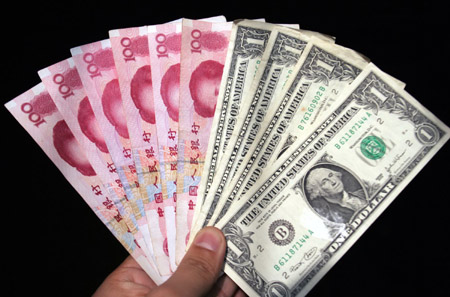
Washington, which wants to close a portion of its trade deficit, is pushing for a revaluation of the Chinese currency, accusing Beijing of monetary dumping.
The trade frictions and the exchange rate of the Yuan are the backbone of the Sino- American dispute.
Both Obama and the Chinese government must act forcefully for domestic reasons. Last week, the American president promised to be “much tougher” vis-à-vis Beijing to enforce trade agreements between the two countries, including the opening of the Chinese domestic market to U.S. products.
The revaluation of the Yuan is a priority for the White House, as it reaffirmed, in its discussions with the People’s Republic. According to the New York Times, the White House is studying the option to denounce Beijing as a state that manipulates its currency in the April 2010 Semiannual Report on International Economic and Exchange Rate Policies. By then, pressure on the Chinese capital to repeat what was done in 2005 will have increased. In 2005, the Yuan had ceased to be exclusively anchored to the U.S. dollar so that from now on it would be anchored to a basket of currencies. The U.S. dollar, however, continues to dominate heavily.
Since July 2008, the price of the Yuan has barely fluctuated. This anchor has allowed great stability in trade between China and the United States. The latter complained bitterly that this situation is equivalent to, according to them, a dumping of all goods produced in China, the Chinese currency having de facto appreciated but in smaller proportions because of the anchorage.
Even if the Yuan has appreciated by 20 percent in five years, some U.S. experts believe that it is still largely undervalued against the dollar, up to 40 percent according to the most “virulent” critics. Thus, the trade imbalance would have increased considerably in recent years (except in December 2009, when it fell by 18.14 billion, against slightly more than 20 billion a month earlier). However, the gap is there. The U.S. trade balance ended the year [2009] with a deficit of $677 billion, 40 percent attributable to China ($266 billion).
In return, Beijing lends the accumulated U.S. dollars to Washington and finances the U.S. debt, as Japan had done before. Its reserve ratio reached $2.4 trillion. $1.7 trillion of this would be invested in the United States, and $400 billion has gone toward U.S. investment in 2008. However, the Americans let the dollar slip against the Euro and the Yen in order to repay their debt. A reduction in the value of the U.S. dollar greatly reduces Chinese savings.

Leave a Reply
You must be logged in to post a comment.